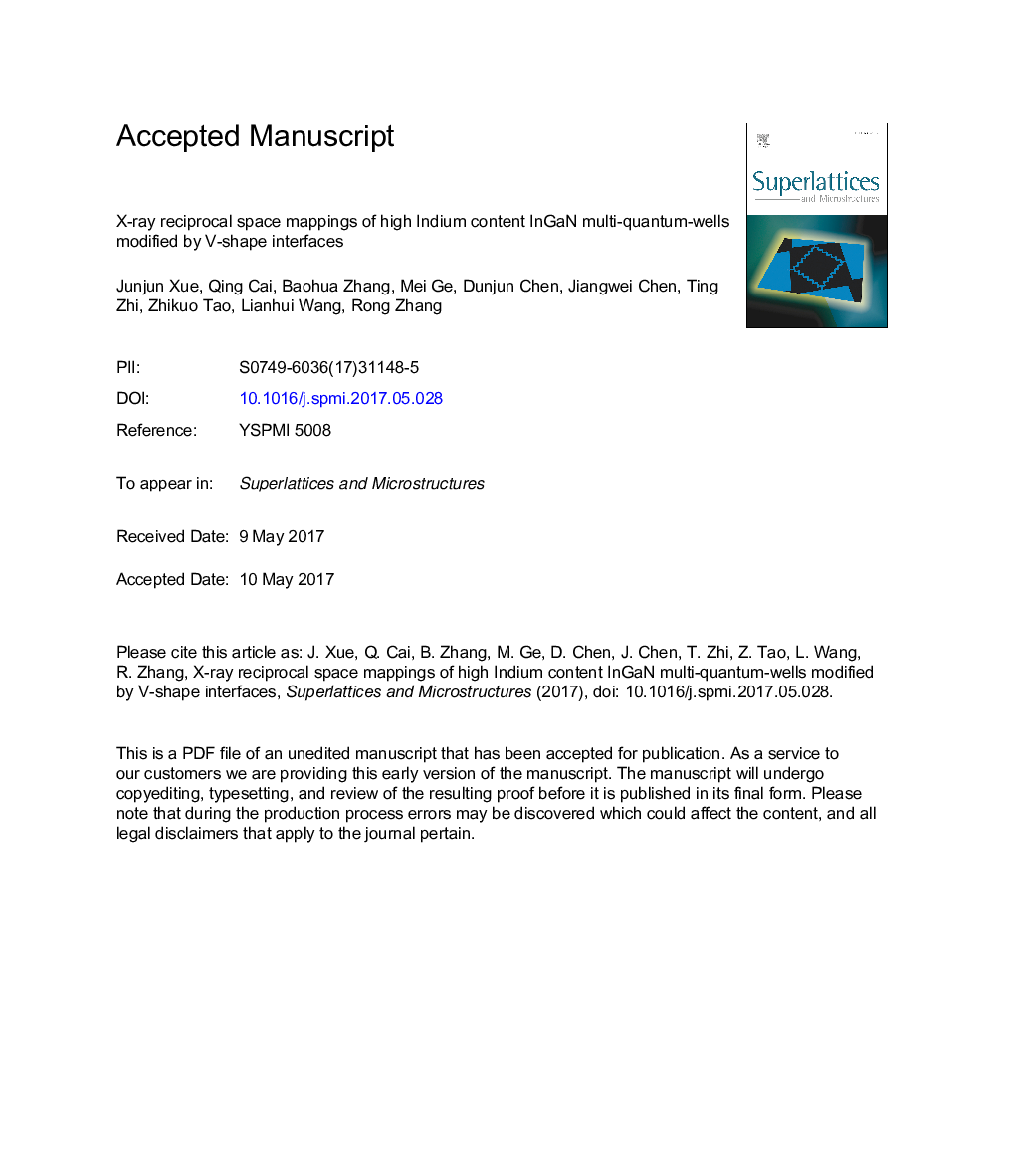| Article ID | Journal | Published Year | Pages | File Type |
|---|---|---|---|---|
| 7940319 | Superlattices and Microstructures | 2017 | 11 Pages |
Abstract
X-ray diffraction (XRD) reciprocal space mappings (RSM) were applied to structurally characterize InGaN multi-quantum-wells alloys with V-shape morphology (V-MQWs), epi-grown successively on the rough thick n-InGaN layer by plasma assisted molecular beam epitaxy on c-plane sapphire. In asymmetric (105) RSM, all reciprocal lattice points (RLPs) of satellite peaks have obvious shift to both sides along axis Qx, but the RLP of the zero-order peak diffracted from MQWs locates at the pseudomorphic line, aligning with the n-InGaN layer diffraction peak (substrate peak) along axis Qy. Unlike the shift of satellite peaks caused by partial strain relaxation of MQWs in asymmetric RSM, the abnormal shift in our sample is aroused by the special profiles of interfaces of V-MQWs. According to the x-ray reflectivity of the interfaces of MQWs, the quasi-symmetric V-shape MQWs can be divided into the so-called “high reflection coefficient (HRC)” area and the “high transmission coefficient (HTC)” area. In kinematics of XRD, the satellite peaks from MQWs can be attributed to the diffraction of reflected x-ray by interfaces of MQWs. In that case, the satellite peaks were modified by the interfaces of V-MQWs so that RLPs of satellite peak were contributed by the diffraction of interfaces of MQWs in HRC area, rather than in the HTC area. The zero-order peak from MQWs was still determined by the diffraction from lattice planes both within the HRC and HTC areas.
Related Topics
Physical Sciences and Engineering
Materials Science
Electronic, Optical and Magnetic Materials
Authors
Junjun Xue, Qing Cai, Baohua Zhang, Mei Ge, Dunjun Chen, Jiangwei Chen, Ting Zhi, Zhikuo Tao, Lianhui Wang, Rong Zhang,
